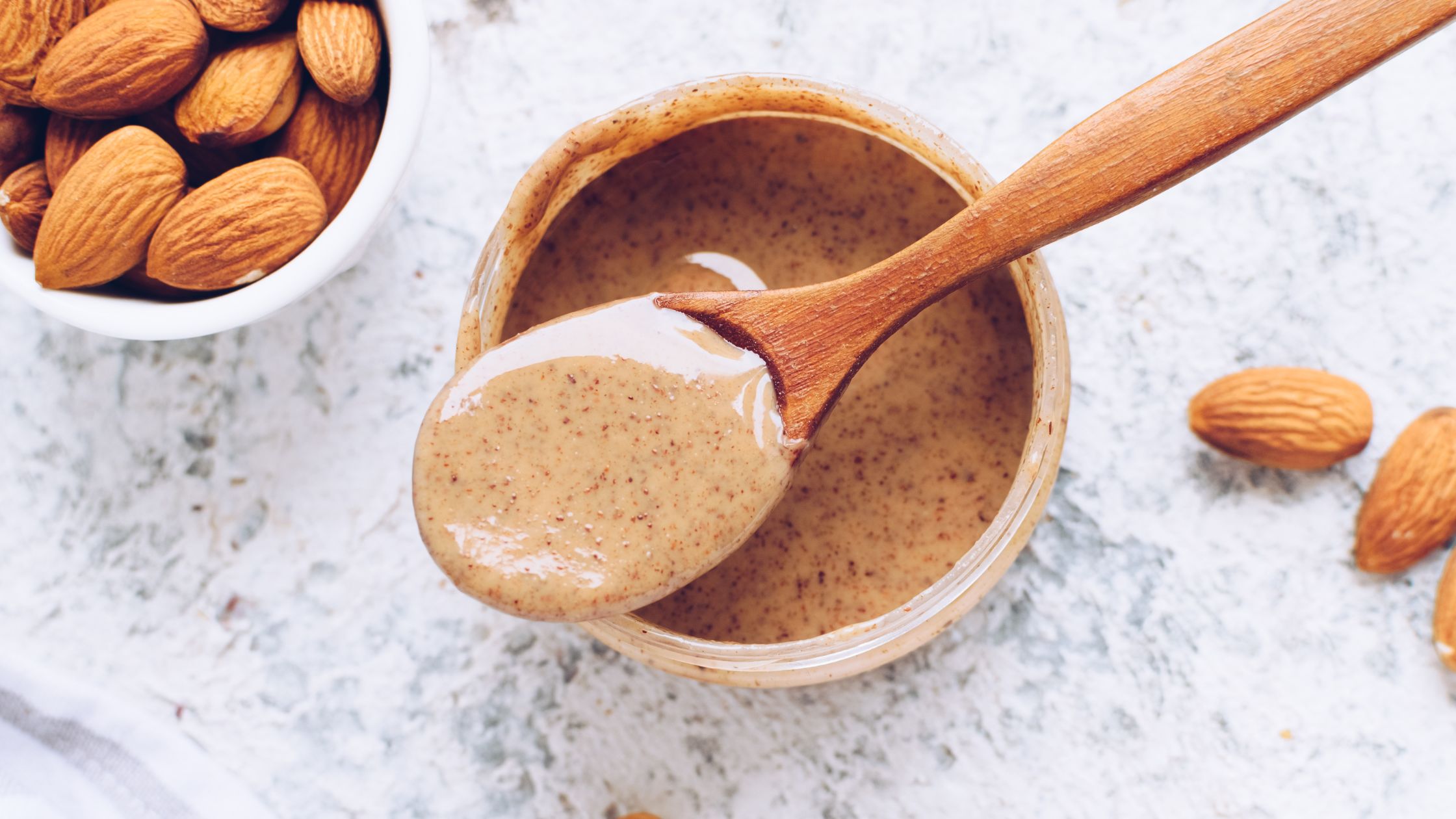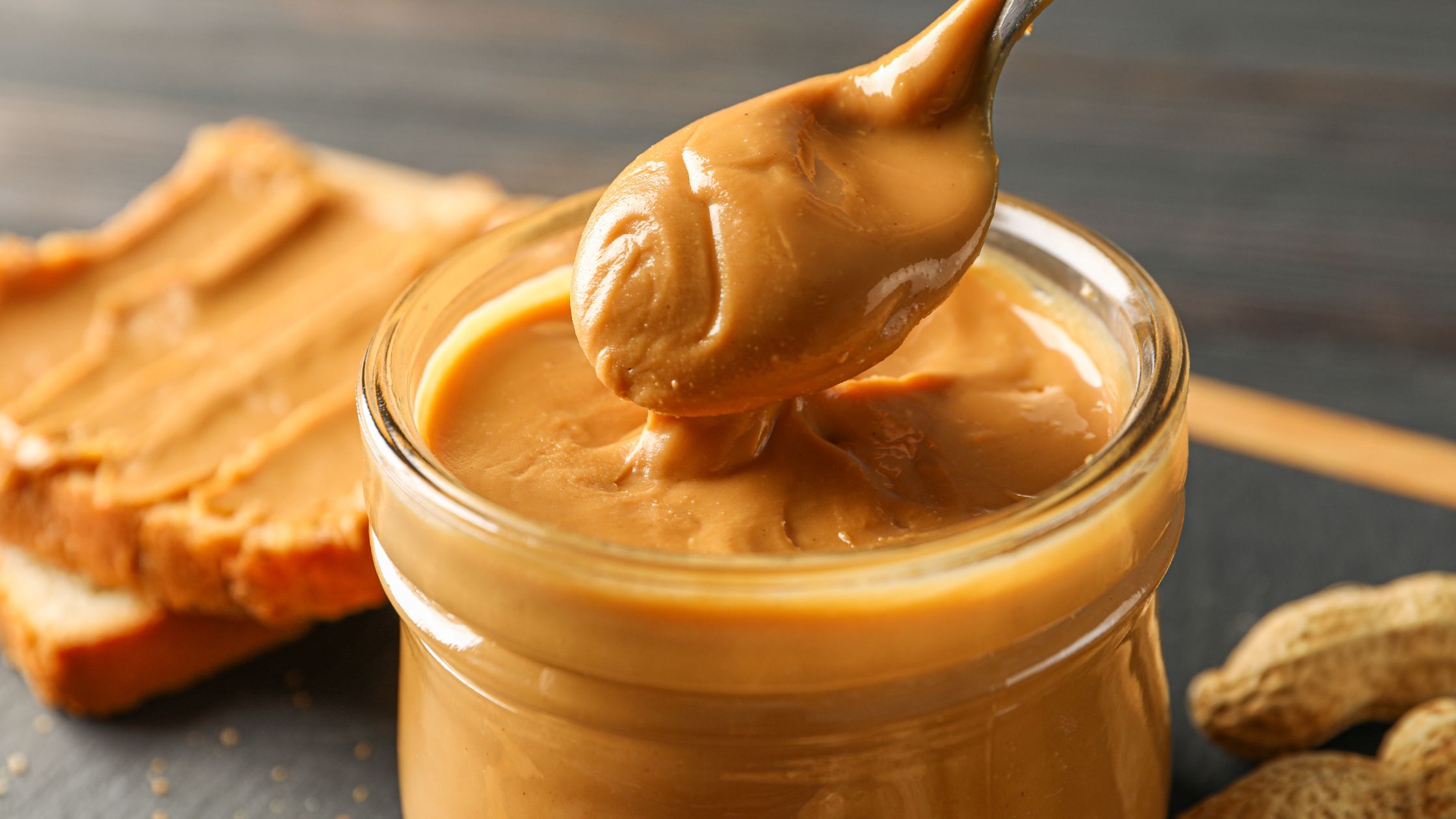When it comes to nut butter most people tend to lean toward peanut butter. It's not the only option out there, however, as almond butter is another equally delicious choice. Both peanut butter and almond butter are versatile when being used for cooking or baking, both come in chunky or smooth, and both can be a great right-off-the-spoon snack. There are, however, a number of differences between them; let's dive into the details and break it all down:
Nutrition
Peanut Butter
- Protein - Peanuts are high in protein
- Fats - Peanuts contain mostly unsaturated fats
- Vitamins and Minerals - Peanut butter is considered to be a good source of Vitamin B6, niacin, and magnesium.
- Nutrition facts for 1 Tablespoon of peanut butter -
- Protein: 3.6 g (8% DV)
- Carbs: 4 g
- Fiber: 0.8 g (4% DV)
- Fat: 8 g (13% DV)
- Sugar: 1.7 g
Almond Butter
- Protein - Also a good source of protein, almonds have slightly less than peanuts
- Fats - Almonds are mostly monounsaturated fats
- Vitamins and Minerals - Almonds are a great source of Vitamin E, iron, magnesium, and calcium. They have far more calcium than peanut butter. Per tablespoon, almond butter has 56mg as compared to 7mg for peanut butter
- Low in Carbs - Almond butter is relatively low in carbohydrates
- Nutrition facts for 1 Tablespoon almond butter:
- Protein: 3.4 g (7% DV)
- Carbs: 3 g
- Fiber: 1.6 g (7% DV))
- Fat: 9 g (14% DV)
- Sugar: 1 g
So What's The Difference?
In addition to the difference in nutritional breakdown, there are several important differences between almonds and peanuts:
Legume vs. Nut
One important distinction lies in their botanical origins. While almonds are tree nuts, peanuts are not nuts at all but rather fatty legumes, meaning they belong to the same food family as beans and lentils.
Aflatoxin
Peanuts, and indeed all peanut products, including peanut oil, can be susceptible to aflatoxin, a naturally occurring mycotoxin produced by an Aspergillis fungus that grows in the soil. Especially when peanuts are stored improperly, or if exposed to warm humid conditions, peanuts can be highly susceptible to contamination by aflatoxin. High levels of exposure to aflatoxins in people potentially creates a risk for health conditions such as liver damage or cancer.
Although almonds can potentially also be susceptible to aflatoxin since it is a naturally occurring substance, however, studies show that contamination levels are very low.
Pesticide Contamination
Research has shown that peanuts, due to their growth and storage conditions, can potentially be highly contaminated by pesticides. This raises concerns about the potential impact on health when peanuts, peanut butter, or other peanut products are consumed regularly. The USDA identified 8 specific pesticides found on peanuts:
- Piperonyl butoxide
- Dichlorodiphenyldichloroethylene (DDE)
- Pentachloroaniline (PCA)
- Quintozene (PCNB)
- Fluazinam
- Pentachlorobenzene (PCB)
- Carboxin
- Malathion
To avoid these pesticides it's important to choose organic peanut butter. It's also best to read the label, for both peanut butter and almond butter, and avoid added oils, sugars, or salt.
In Summary
When choosing between almond butter and peanut butter, both provide some nutritional benefits. While almond butter offers more monounsaturated fats, more micronutrients, and less carbohydrates, peanut butter provides a slightly higher protein content.
However, it's essential to take into account the potential concerns for contamination from aflatoxin and the pesticide residues found in peanuts. Choosing organic options may help reduce the risk.
Remember to read the label and keep in mind that personal preference, dietary needs, and awareness of potential contaminants should help guide your choice.
Sources
Robyn O’Brien. “Food Allergies: The Hidden Truth About Peanuts.” Robyn O’Brien, 2019, robynobrien.com/food-allergies-the-hidden-truth-about-peanuts/.
Author links open overlay panelA.M. Torres a b, et al. “Review on Pre- and Post-Harvest Management of Peanuts to Minimize Aflatoxin Contamination.” Food Research International, Elsevier, 28 Feb. 2014, www.sciencedirect.com/science/article/abs/pii/S0963996914001331.
Cao, Weiya, et al. Toxicology Mechanisms and Methods, vol. 32, no. 6, 11 Jan. 2022, pp. 395–419, doi:10.1080/15376516.2021.2021339.
Kanik, Tugce, and Bulent Kabak. Journal of Food Safety, vol. 39, no. 4, 25 Apr. 2019, doi:10.1111/jfs.12646.
Network, Pesticide Action. What’s On My Food :: Pesticides on Peanut Butter, www.whatsonmyfood.org/food.jsp?food=PB.



